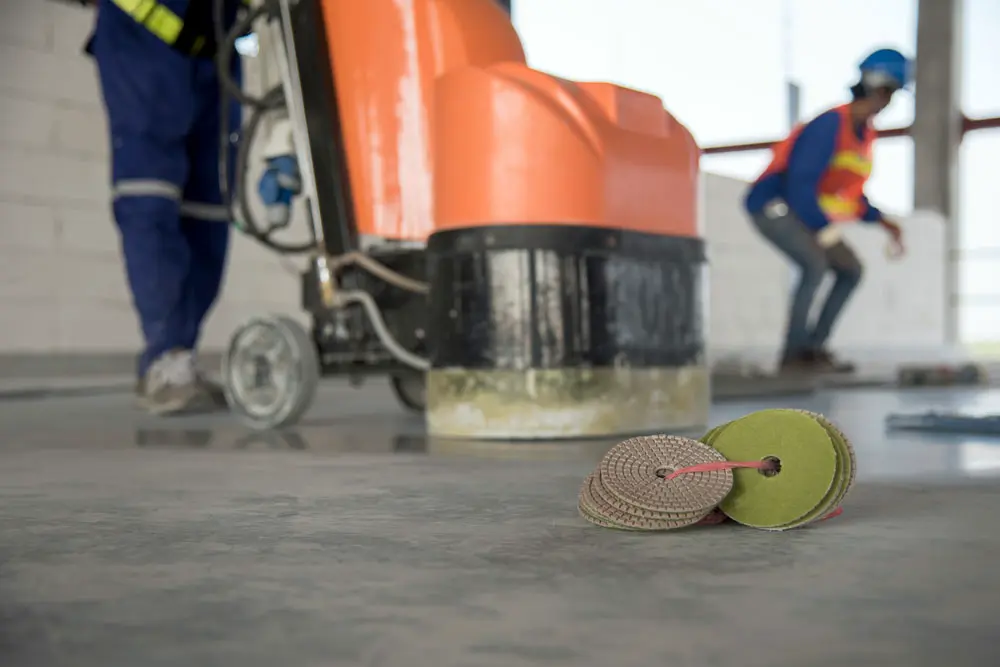How to Remove Epoxy Coating From Concrete Surfaces
Unfortunately, there isn’t an endless list of ways to remove epoxy coating from concrete. Removing epoxy coating requires harsh chemicals and heavy equipment. One of the characteristics of concrete is the presence of numerous pores on its surface, which if the epoxy coating is used, these pores are completely filled and cause better adhesion of concrete to the epoxy. The epoxy layer prevents water, moisture and insects from entering the concrete, thus protecting the concrete from damage.
One of the characteristics of epoxy layers is their strength and hardness; In fact, it is this property of epoxy that protects the concrete layer beneath it. On the other hand, for any reason, the epoxy layer may need to be replaced, and the hardness of the epoxy makes it difficult to clean it from the surface.
However, with all the difficulties, you can clean the epoxy layer by choosing the right tool and a little perseverance. There are two methods for cleaning epoxy from the surface:
- Mechanical cleaning (using a sandblasting method or using electric sanding machines)
- Using chemical solvents.
Mechanical cleaning is faster. However, due to the fact that this method uses a lot of equipment and supplies, its implementation cost will be higher. On the other hand, this method is more messy and dirty. As a result, it is easier and cheaper for the general public to use chemical solvents, although it is more time-consuming. Epoxy can be dissolved using some chemicals. Therefore, it should be said that choosing the right chemical solvent is the most important factor in cleaning the epoxy layer.

Remove Epoxy Coating
Select the appropriate solvent
To choose the right solvent, you must first know whether the epoxy surface you are looking for is solvent-based or water-based. To know this, you need to get help from experts in this field. To do this, you can make a small part of the epoxy and refer to specialists. Depending on the type of epoxy, a suitable solution can be prepared. In fact, water-based solvents should be used for water-based epoxies.
Observe safety tips while working
As mentioned, removing epoxy coating requires special solvents. Solvents are composed of highly toxic chemicals and should be used with extreme caution. If you use these materials, be sure to use filtered masks, goggles and work gloves. If these substances get into the eyes for any reason, you should rinse immediately with plenty of water and go to the hospital immediately. If you go to the hospital, be sure to bring the solvent container with you so that the necessary measures can be taken based on the type of solvent.
Cleaning the surface
Thoroughly clean the surface with a vacuum cleaner. Then wash the surface with clean water and T mop and remove any dust, dirt and debris.
Mixing chemical solvents
Combine a certain amount of clean water with the solvent according to the instructions written on the solvent container. Solvents should usually be mixed with water in a ratio of 1: 10. But in the end, it should be noted that this recipe is not true for all solvents and should be done according to the instructions of the same solvent.
Apply solvent impregnated te on the epoxy surface
As mentioned earlier, solvents are very dangerous substances and emit toxic heat and vapours. It is better to keep the doors and windows open while working, and if the desired environment is closed, be sure to use a ventilator. If you feel bad while working and you are not feeling well, be sure to stop working.
After performing the mentioned safety measures, apply the desired solution on the surface using T (it is better not to use sponge T mop. Filament or microfiber Ts are more suitable options). You should do this slowly and in a circle on the surface. The time it takes for the epoxy to dissolve in the solvent depends on the type of solvent and is usually written on the container containing it. Be careful that you do not rush into doing this. Due to the movement of the solution-impregnated tee on the surface, the solvent dissolves the epoxy. You have to pull until the epoxy is removed from the surface.
If you want to rest while working, be sure to wipe the finished or part-time area thoroughly with a damp cloth.
Scratching and tearing the epoxy surface
Since the whole epoxy does not necessarily disappear in the previous step, in this step, apply the epoxy using long-handled knives (with sharp edges). Then thoroughly clean the teak with water and clean the surface again with a damp tee to completely remove the traces of chemicals. Allow the surface to dry completely. You can also use a fan to speed up the operation.
Repeat operations
You may need to repeat steps 1 to 5 several times to completely remove epoxy coating from the surface.

